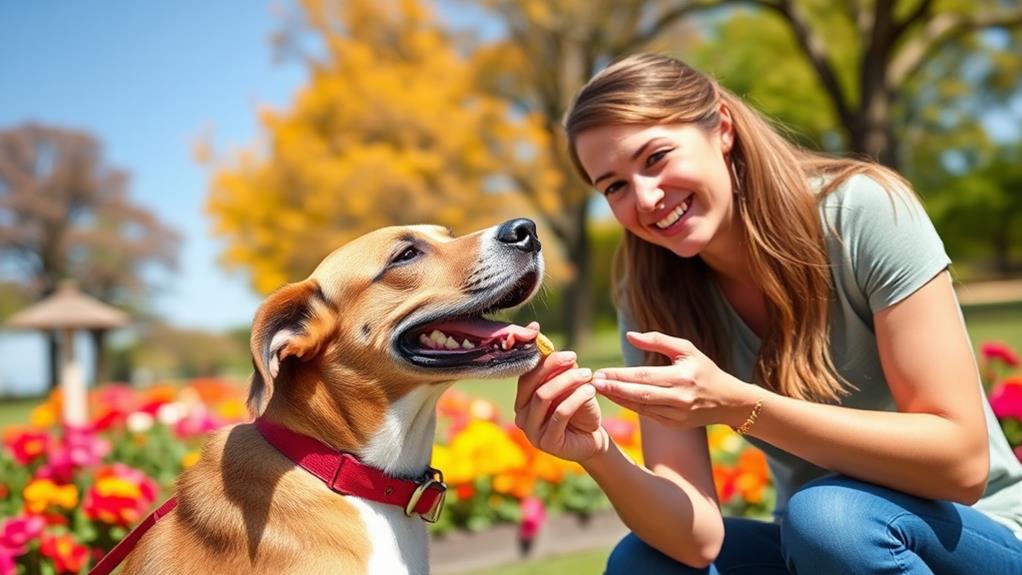Positive reinforcement techniques are key for training an obedient dog. Focus on rewarding desirable behaviors with treats, praise, or playtime. It's essential to deliver rewards immediately after your dog performs the correct action to create a strong association. Make sure to use consistent commands across everyone in your household. Experiment with different rewards to find what motivates your dog most, whether it's high-value treats or favorite toys. Staying patient and allowing your dog to learn at their own pace fosters a stress-free environment. Keep practicing these techniques to strengthen your bond, and you'll discover even more effective strategies along the way.
Understanding Positive Reinforcement
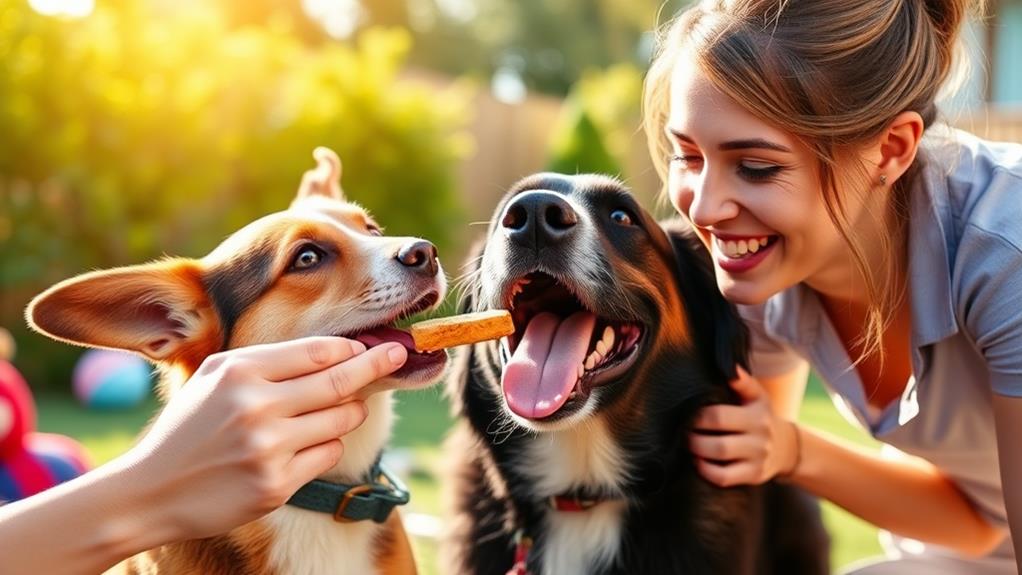
When it comes to dog training, understanding positive reinforcement is essential for effective communication with your furry friend. This approach focuses on rewarding desired behaviors rather than punishing unwanted ones. By using positive reinforcement, you encourage your dog to repeat behaviors that lead to rewards, which can be treats, praise, or playtime.
You'll find that your pup responds more enthusiastically when they associate good behavior with something enjoyable. For instance, if your dog sits on command and you reward them immediately with a treat, they'll begin to connect sitting with a positive outcome. This creates a strong bond of trust between you and your dog, making training sessions more enjoyable for both of you.
Key Techniques for Training
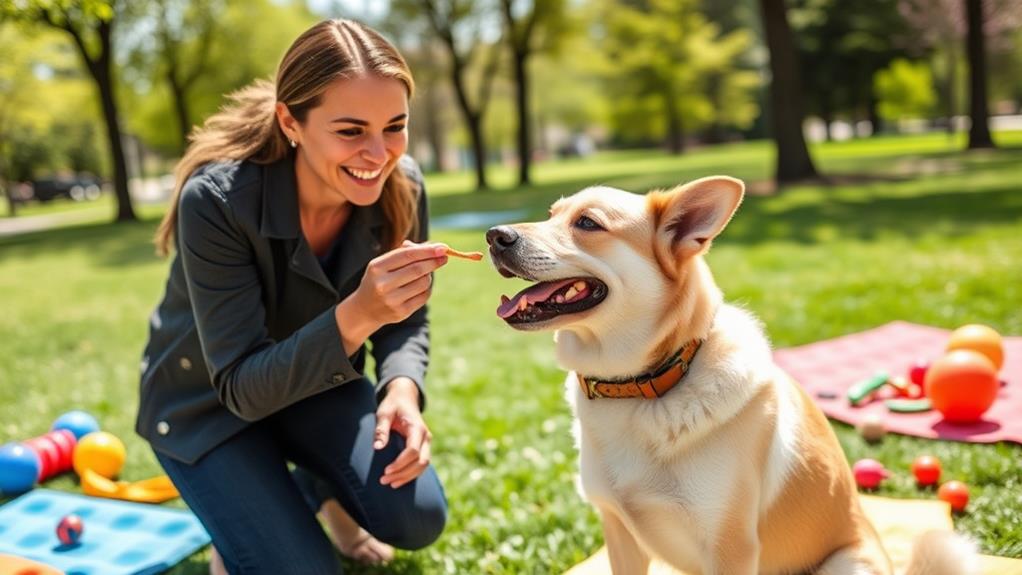
Building on the foundation of positive reinforcement, several key techniques can enhance your dog training experience. First, consistency is indispensable. Make sure everyone in your household uses the same commands and rewards to avoid confusing your dog. Next, timing plays a critical role. Reward your dog immediately after they perform the desired behavior, so they connect the action with the reward.
To help you remember these techniques, here's a simple table:
| Technique | Description | Importance |
|---|---|---|
| Consistency | Use the same commands and rewards | Prevents confusion |
| Timing | Reward immediately after the action | Strengthens the behavior link |
| Patience | Allow time for learning | Encourages a stress-free process |
Lastly, don't forget patience. Every dog learns at their own pace, so give them the time they need to grasp new commands. By applying these techniques consistently, you'll create a positive and effective training environment. Your dog will thrive, and you'll enjoy the process of training together!
Selecting Effective Rewards

Choosing the right rewards is imperative for effective dog training. The rewards you select should motivate your dog and encourage desired behaviors. Start by identifying what excites your dog the most. It could be treats, toys, or praise. Pay attention to your dog's reactions; some may prefer food, while others might respond better to playtime or affection.
When using treats, guarantee they're high-value and tasty—something your dog doesn't get often. You can also mix it up with different flavors or textures to keep their interest piqued. If your dog loves toys, consider using their favorite during training sessions; a quick game can serve as a powerful reward.
Positive verbal reinforcement, like saying "good boy" or "great job," can also be effective. Make sure your tone is enthusiastic to convey your approval. Additionally, varying your rewards can keep the training engaging. A combination of treats, toys, and praise can make your sessions more dynamic and enjoyable for your dog.
Ultimately, the key is to find what truly motivates your furry friend, enhancing their willingness to learn and obey. Adjust your rewards as needed and watch your dog thrive in training!
Timing and Consistency
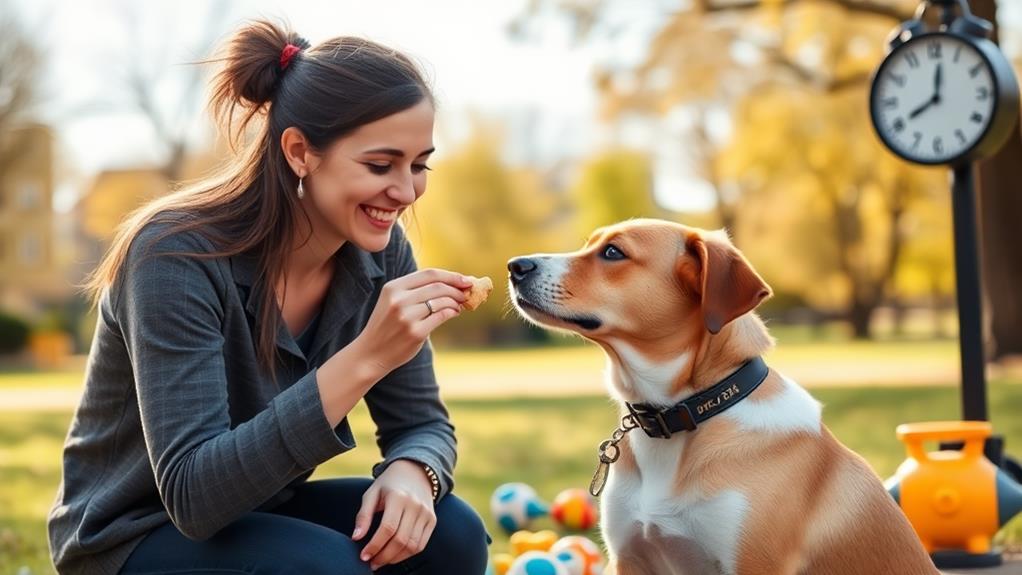
Effective training goes beyond selecting the right rewards; it also hinges on your timing and consistency. When you reinforce your dog's behavior, delivering the reward promptly can make all the difference. If you wait too long, your pup mightn't connect the dots between their action and the reward.
Here are a few tips to help you master timing and consistency:
- Immediate Praise: Give verbal praise or treats within seconds of the desired behavior.
- Consistent Cues: Use the same commands and signals for specific actions to avoid confusion.
- Regular Schedule: Train at the same times each day to establish a routine.
- Clear Expectations: Set clear boundaries and rules so your dog knows what's expected.
- Reinforce Frequently: Especially during the learning phase, reinforce desired behaviors often to encourage repetition.
Common Challenges and Solutions
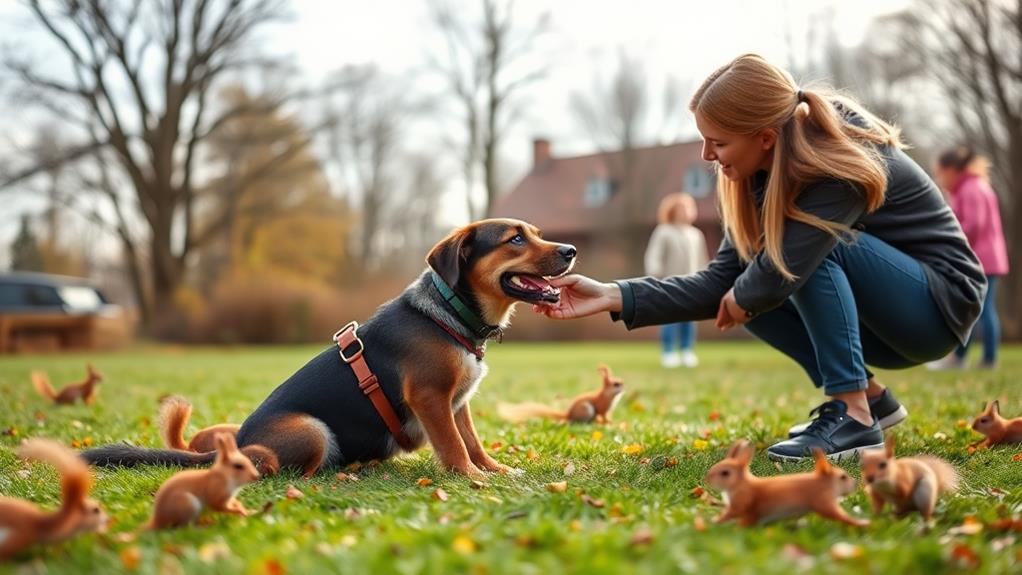
Facing common challenges during dog training can be frustrating, but recognizing these hurdles is the first step toward effective solutions. One challenge you might encounter is your dog's lack of focus. To combat this, try training in a quiet environment and gradually introduce distractions as your dog becomes more attentive.
Another issue is inconsistent behavior; your dog may follow commands one day but ignore them the next. To address this, guarantee everyone in your household uses the same commands and reinforces the same behaviors. Consistency is key.
You might also face difficulties with motivation. If your dog isn't responding to treats, experiment with different rewards, like toys or praise, to find what excites them most.
Lastly, if your dog seems fearful or anxious during training, take a step back. Use gradual exposure to new situations and certify positive experiences with treats and praise to build their confidence.
Frequently Asked Questions
What Age Is Best to Start Positive Reinforcement Training?
You can start positive reinforcement training as early as eight weeks old. Young puppies are enthusiastic to learn, and beginning at this age helps build a strong foundation for good behavior throughout their lives.
Can Positive Reinforcement Be Used With Older Dogs?
Absolutely, you can teach an old dog new tricks! Positive reinforcement works wonders with older dogs. They respond well to praise and treats, so don't hesitate to start training them at any age. It's never too late!
How Do I Know if My Dog Is Motivated by a Reward?
You'll know if your dog is motivated by a reward when they show excitement or focus on it. Watch their body language—tail wagging, enthusiastic paws, or a happy bark indicates strong motivation for the treat or toy.
What Should I Do if My Dog Ignores the Rewards?
If your dog ignores rewards, try switching them up. Use higher-value treats or different toys. Guarantee you're in a distraction-free environment, and be patient. Sometimes, it takes time for your dog to respond.
Are There Drawbacks to Using Positive Reinforcement Techniques?
Aren't you curious about potential drawbacks? While positive reinforcement builds trust, it can sometimes lead to over-reliance on treats or inconsistent behavior if not balanced with other training methods. It is crucial to maintain variety in your approach.
Conclusion
In dog training, dedication and discernment drive delightful results. By embracing positive reinforcement, you're not just shaping your dog's behavior; you're strengthening your bond. Remember, consistency is key, and choosing the right rewards makes a world of difference. Stay patient and proactive, tackling challenges with confidence. With these techniques in your toolkit, you're well on your way to a well-behaved buddy. So, celebrate every success and enjoy the journey together—your loyal companion deserves it!

